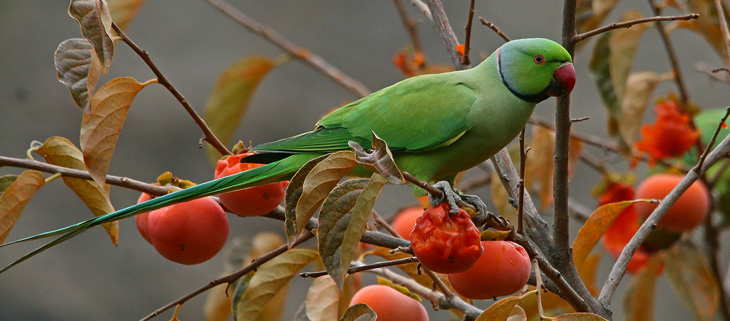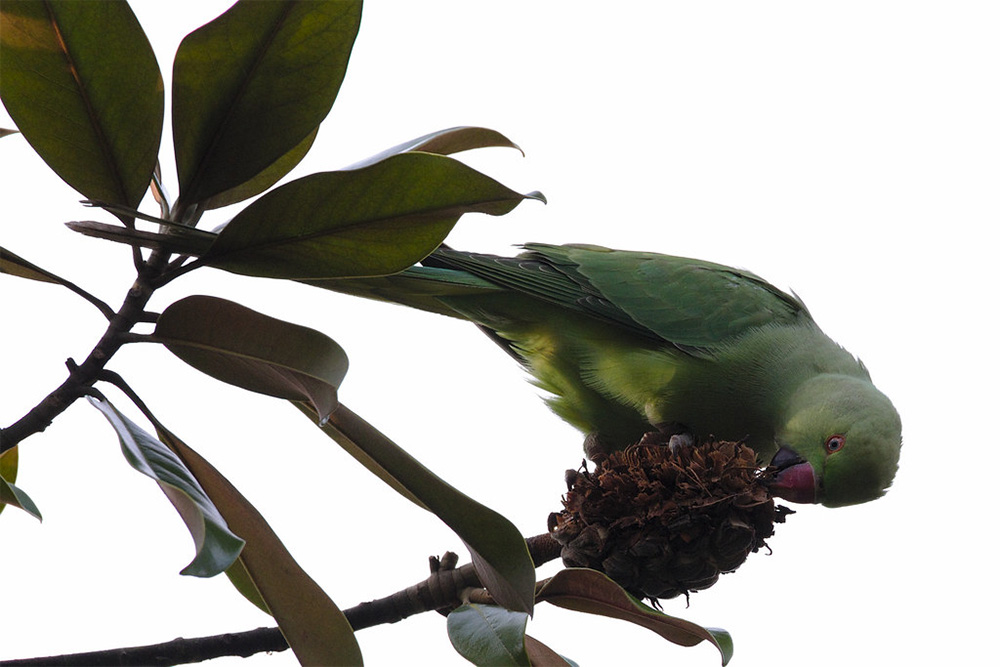Originally published on Island Conservation

Community members look for solutions to the threat of invasive Rose-ringed Parakeets in Kauai which are impacting native wildlife and the economy.

The Rose-ringed Parakeet (Psittacula krameri) is a species native to sub-Saharan Africa and South Asia, but in the 1960’s they became a common household pet around the world. Predictably, in 1968 a pair was accidentally released onto Kauai Island, Hawaii. Along with this, the wreckage caused by 1982’s Hurricane Iwa, released more parakeets into the wild, allowing them to establish a growing population, of which has now reached 7000 individuals.
Parrots are often highly destructive birds, and are well known to damage crops, private property, and natural resources.
USDA
These parakeets consume a wide variety of fruits and nuts, without predators, the parakeet’s population has grown exponentially. The birds swarm local farms, devouring whole crops in minutes and while farmers have used multiple defense mechanisms, the parakeets have developed tactics to work around them.
Rose-ringed parakeets are slow invaders. They aren’t noticed until their numbers reach a critical mass
Aaron Shiels, National Wildlife Research Center.
The local government have watched the parakeets become a growing nuisance and are now worried about not only their ecological impact but also the economic losses sustained from their predatory habits.

Jerry Ornellas, an orchard farmer in southeastern Kauai, has reported losing up to 30 percent of his crops in 2016:
It depends on where you are geographically, but small farms are averaging a 10 percent loss.
This loss is not just a sizable blow to local farmers, but their entire agricultural economy, estimated to be worth $65 million, is suffering significantly from the parakeet plague. The Hawaiian Islands are not alone, Rose-ringed Parakeets have spread around the world, threatening ecosystems and local economies.
Globally, the Rose-ringed Parakeet has spread to 35 countries beyond its native habitats – few as adversely affected as Israel, where up to 50,000 birds devour wine grapes, dates, sunflower seeds, and nearly half the yearly almond harvest.
Sara Novak, Modern Farmer
Now, community members in Kauai are working with local governments and researchers to find effective approaches to removing the parakeets, protecting native ecosystems and agriculture.
Sources:
The Garden Island
Diets of Kauai’s invasive rose-ringed parakeet (Psittacula krameri): evidence of seed predation and dispersal in a human-altered landscape, USDA
Modern Farmer
This article was originally published on Island Conservation
1 Comment
Leave a Reply
Related News & Blogs
Biological control in action: Zambia’s field days on fighting fall armyworm
Experts from CABI recently held two field days and an expo in Zambia, showcasing innovative approaches to pest management to 584 farmers, agro-dealers and other stakeholders to help raise awareness of approaches to tackle the invasive fall armyworm (Sp…
11 June 2025





Thank you for this informative article. Just wanted to share the link to a new publication in Pacific Science highlighting this invasive bird species and its impacts.
https://www.aphis.usda.gov/wildlife_damage/nwrc/publications/19pubs/rep2019-123.pdf